
What is sustainable landscaping and what is its significance?
We live in the center of the Mediterranean,a place of mild climate but with enormous risks.Sustainable landscaping is the one that focuses on designs adapted to the climate ,the scenery and the local culture.It is working ,taking as a model the observation of the natural landscapes of the island and trying to emulate them in terms of their ecological functions,aesthetic qualities to integrate them with harmony in the environment ,making a very measured use of natural resources,working with local material .It is not difficult to make a landscape to the extent of the island that gives value to the character of our landscape. The landscaping that the island requires is not only sustainable ,I like to talk about regenerative landscape .This means,that we can recover the fruit varieties,trees,plants and native animals ,which have been adapting to the special conditions of its environment for hundreds of years.We must work hard to avoid losing the genetic richness of the Pitiusa nature.Sustainable landscaping is the one that challenges conventional methodologies and incorporates the latest knowledge to recover the natural fertility of the soil or forest management systems for fire prevention .The projects of the 21st century have to take into account beauty and sustainability in the same way.
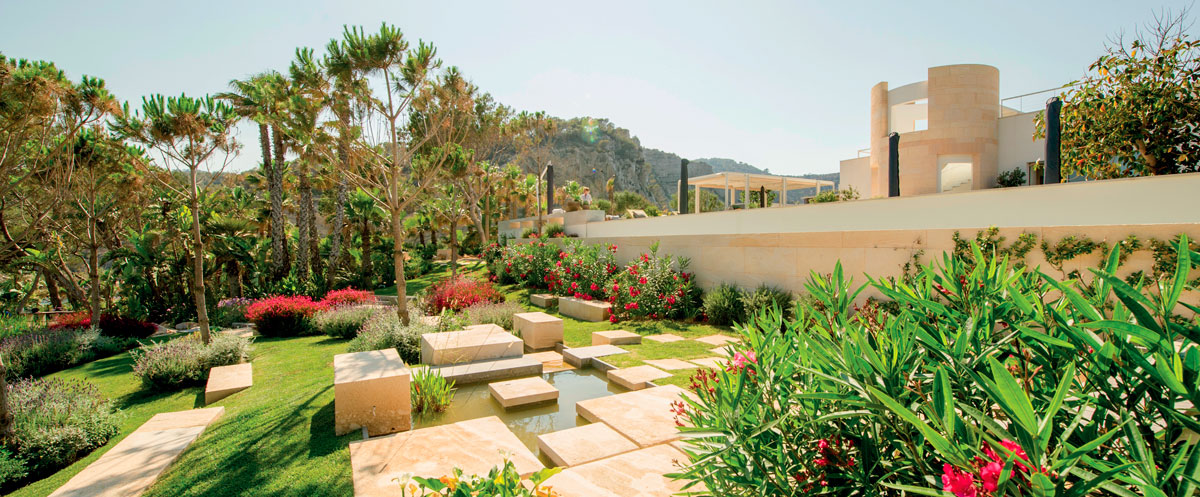 What is your background and where did you study ?
What is your background and where did you study ?
My first training is as an interior designer ,then I discovered that I could do my job with ecological ,healthy material to whom manufactures them and to whom inhabits these spaces and the environment, I have been working with bioclimatic and sustainable building in my projects for 25 years .In 1998 I could meet Masanobu Fukuoka in Mallorca ,the inventor of natural agriculture ,who caused a strong impact and evolution in the way I see the world.From that moment on ,my search was focused on how we can design spaces in which the human being live together in harmony with nature.Since 2001 I have been studying design in Pernacultura which is a comprehensive method of the design of sustainable human settlement ,in which all kinds of techniques are integrated : debugging and recycling water with biological systems ,bioclimatic architecture ,renewable energy ,landscaping, organic food production ,edible forests ,etc,etc…
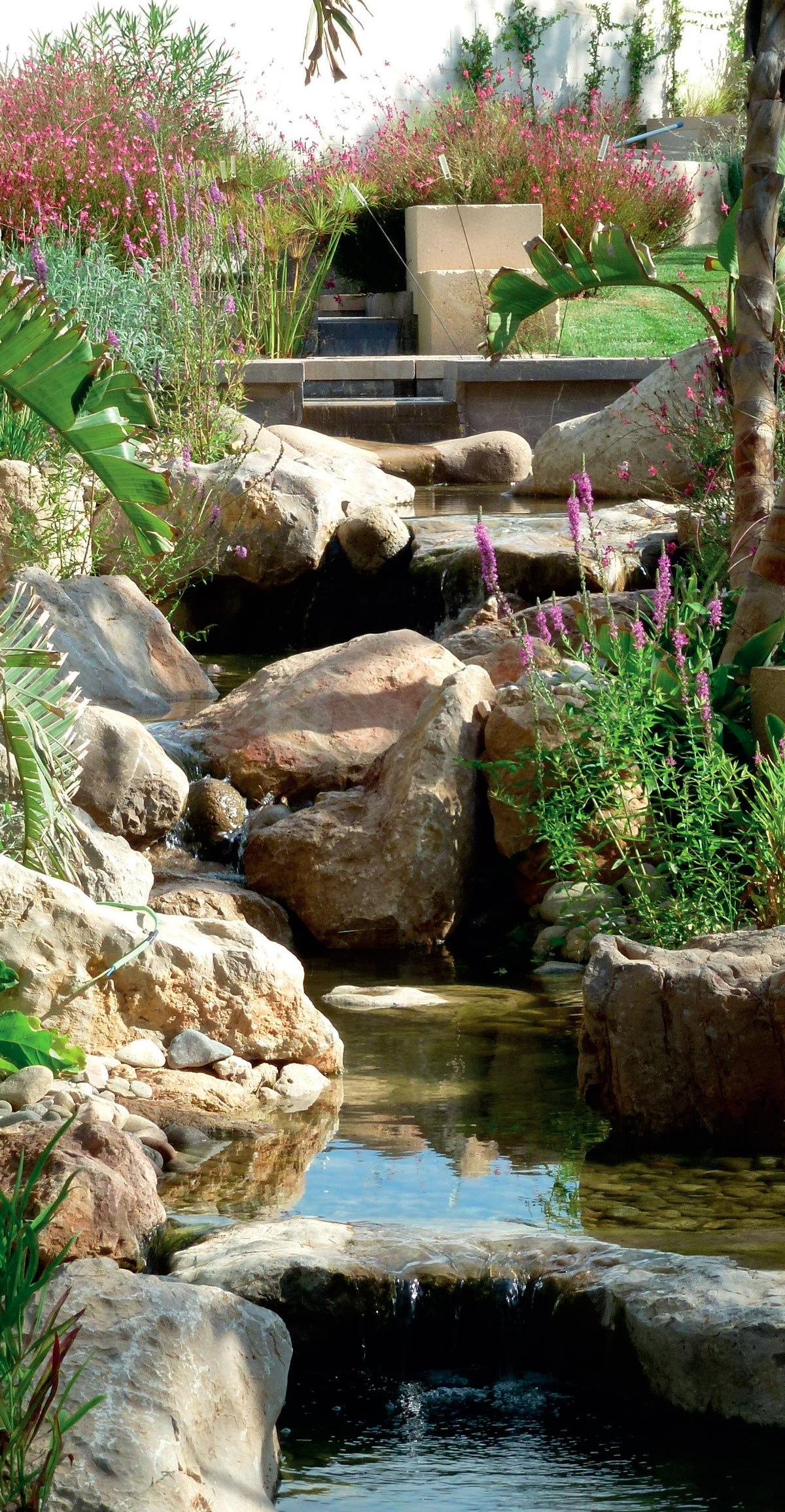 Is there any demand in Ibiza for your specialization?
Is there any demand in Ibiza for your specialization?
Yes,the health awareness is growing quickly.Each time there are more clients who seek to do things in a way that respects the nature ,culture and the landscape of the place .The time when clients demanded subtropical landscapes of great impact on resources and landscapes which are impossible to mantain in our context is gone.The client who is making a building on the island wants to make it energy efficient,the materials to be natural and use of non toxic paints . A home designed with bioclimatic criteria is felt in another way,it has another energy ,it is connected with life .The person who makes a house on the island thinks on how to have a garden where the organic food production is balanced with the decorative part,the conservation of the landscape and the natural resources .Today luxury cannot be understood without organic food ,this fashion of the raw food, “detox”cures and yoga .The landscape on demand is in line with that way of life.
What parameters do you have to take into account when designing and implementing your projects?
The first thing is the client, their needs and concerns. Once we know the scope of the project, we assemble the team, which will develope it to cover all the technical, legal and aesthetic aspects: architects, engineers, surveyors, biologists, etc. Then, we do a detailed analysis of the resources of the place: topography, views, fauna and flora, soil type, visual basins, orientation, prevailing winds, etc. Once we know the place and the needs of the client we begin the design process in which the permanent elements are located: house, recycling systems and storage of water, roads and others that we are going to try to give more than one function. For example, design the roads so that we can collect water runoff for later use in irrigation and water runoff does not generate erosion in the soil or breakage of old stone walls. Preserving and enhancing the elements of the landscape of ethnological interest, singular or monumental trees, etc. From that point, we begin to incorporate the new elements that we need. In the same design we can work on agricultural aspects and food production with the creation of corridors for wildlife or purely aesthetic aspects. All this can live harmoniously in the same space. We situate ponds to increase wildlife and to refresh the warm winds of summer, evergreen forests to cushion the cold winds of winter, edible forests where you can find fruit, medicinal plants, dried fruits,fungi, flowers, biomass to heat the house. We know that the more stable systems are very rich in biodiversity, those that mimic nature in its operation with which we reduce maintenance work, water and fertilizer and other consumptions.
Do we have a problem with water in Ibiza?
Water is a crucial issue on the islands.It rains less each time, acquifers are lower than ever and the impact on tourism in the summer is awful. There is no real culture of water and we trust the resource in the large desalination plants that consume large amounts of energy, resource that starts to run out and is going to suffer a dramatic price increase in the next few years.
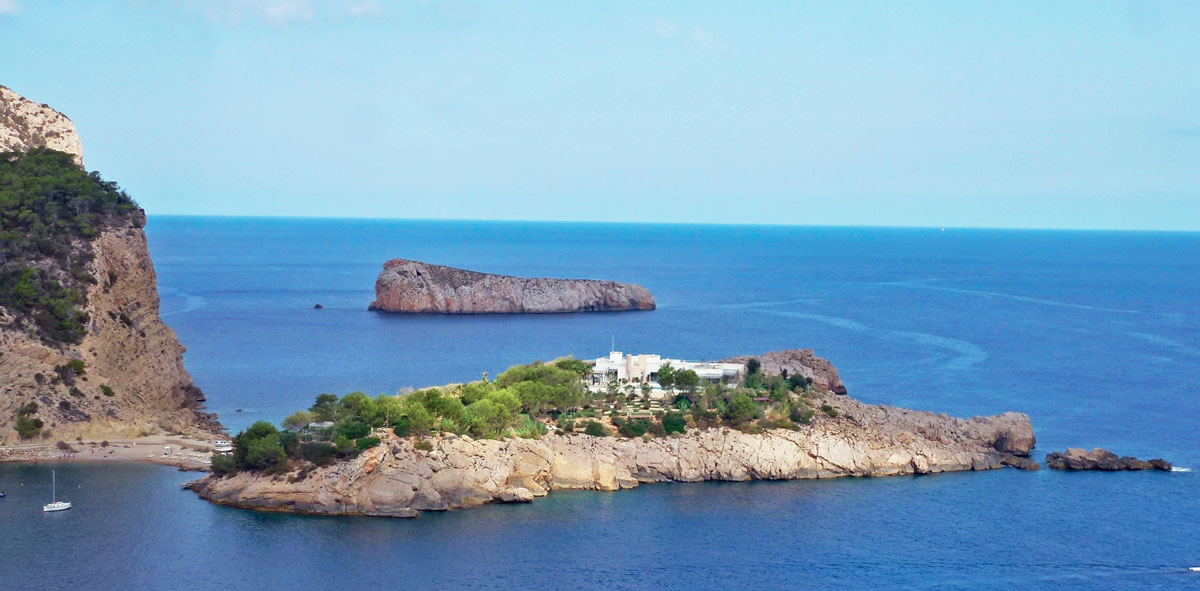 What would you suggest for a better management of water?
What would you suggest for a better management of water?
Good management of water happens when you reduce the individual consumption. On the Balearic Islands we are consuming about 125 litres per person per day and it could be reduced a lot with some awareness and easy measures to implement. Install water reuse systems of showers and toilets in the w.c., create systems of regeneration of the wastewater with natural methods to use for irrigation of gardens. The cities thow into the sea all the rainwater collected from roofs and streets. This is something unacceptable nowadays. Investment is needed to clean up these waters and use them for watering parks, gardens and other services. The biggest water consuming area is gardening and agriculture, and this is where we can make changes in the way we are handling gardens and agricultural land.In the first place, give priority to the use of rain water. We can protect our lands against drought, by working the land with methods that facilitate their infiltration into the soil and to increase the organic matter in the soil so that they retain the water for a longer period of time and increase their fertility as well. Take advantage of the pruning waste converted into compost or use them as fillings for the soil or make use of green fertilizers. Working with species adapted to our climate that require less water to live and try to minimize lawn type coverages or subtropical plants that need lots of irrigation.
 What project have you enjoyed the most ? And suffered the most?
What project have you enjoyed the most ? And suffered the most?
We have recently completed a project that because of its location is very sensitive. The Illa des Bosc at the Port of San Miguel is where we have made a remarkable landscape restoration, recovering the profile of the mediterranean coast, by removing a 98% of the invasive varieties, regenerating all the wastewater for reuse in irrigation, we have improved ighing systems significantly by reducing light pollution and energy consumption. It has been a very complex project in which all the participating teams have suffered so much but on the other hand we have also enjoyed the beauty of the place and we have improved their environmental indicators. I really enjoy several projects I am doing at the moment. In them, I am able to make this combination between decorative garden combined with fruit trees and other edible varieties, working for the pleasure of the client, to produce organic food that provide health and for the nature of the islands. Create orchards, edible forests, aquatic systems that regenerate wastewater and serve as a home for ducks in danger of extinction. Working to give life is a real pleasure.We are beginning the project of an agro-ecological tourism in which we are going to be able to integrate the bio architecture with the agroecological landscaping.
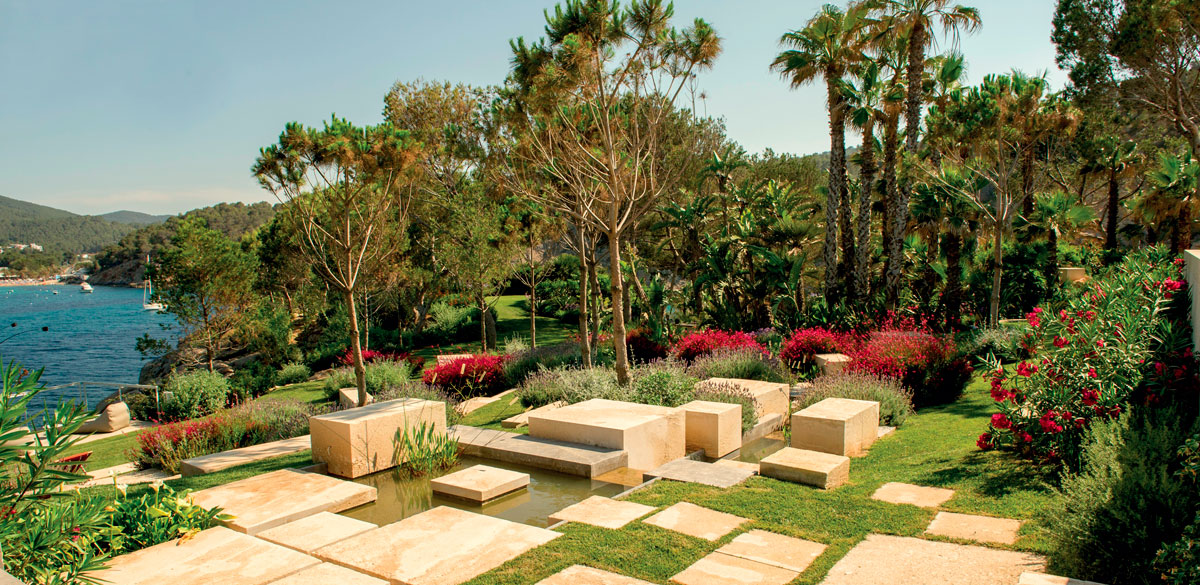 Would you criticise another type of landscaping that is performed in the spanish mediterranean?
Would you criticise another type of landscaping that is performed in the spanish mediterranean?
I think that in general it is a landscape riddled with cliches, images of wonderful gardens imported from other climates and cultures. We must show the clients what our landscaping values are and with what aesthetic and local resources we will achieve results of great beauty with mediterranean personality and work to preserve resources, genetic diversity and cultural value.
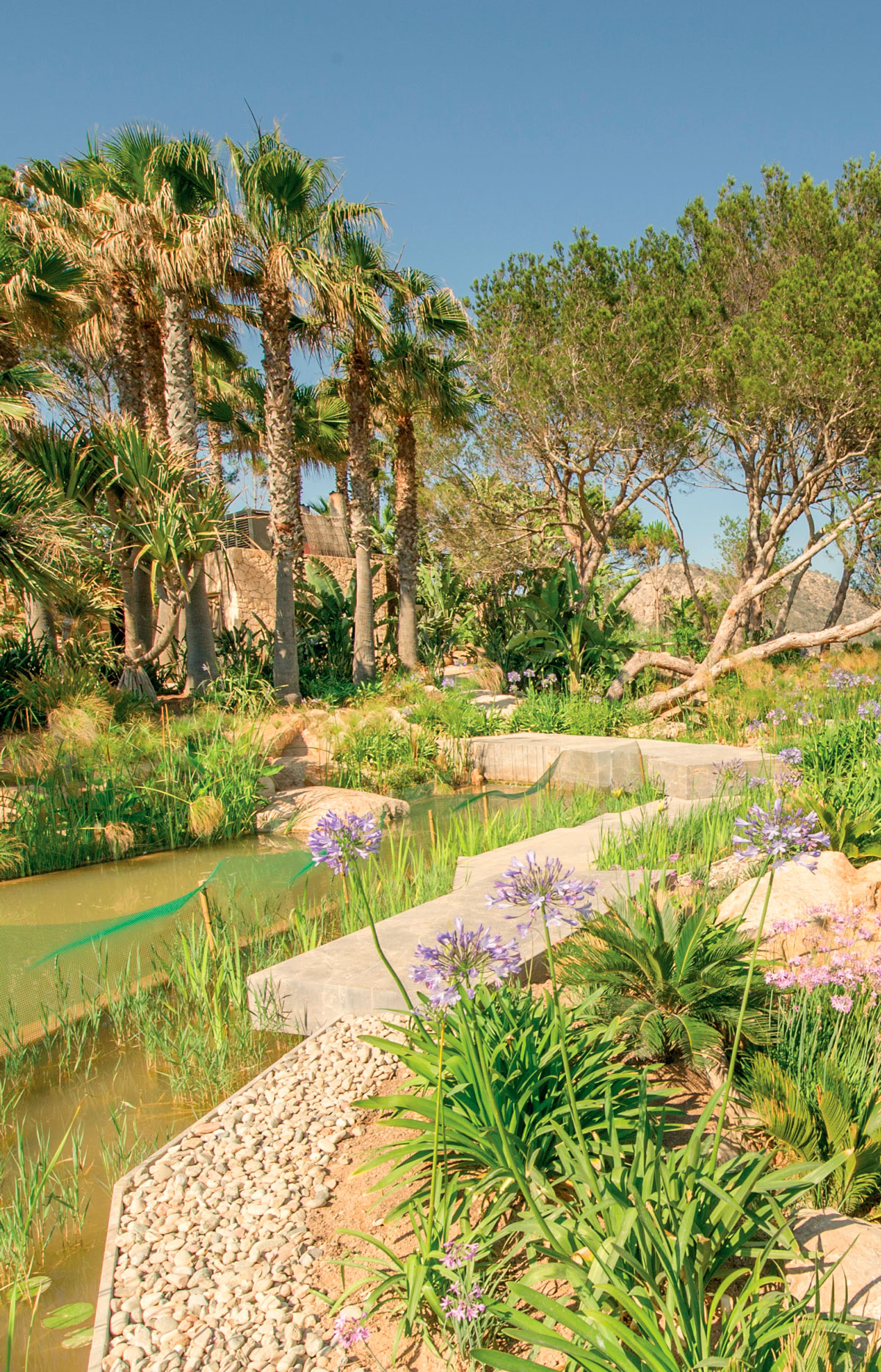 What materials do you like to work with?
What materials do you like to work with?
I like to get to the places where I participate and look around , I always find inspiration. Each place has a vocation and the best results are always working in their favour, in the direction that nature shows us. I like to use materials that will be integrated without shrillness in such an environment. I like to work the light in the projects, where the sunset will be in autumn and which plants will enhance the colours, work the climate with deciduous shadows in summer and its warm winter nakedness. I like to balance design and beauty with the increase of the biodiversity of the place, leave a corridor for wildlife filled with fruit trees so that the country estate is full of birds, incorporate hotels for pollinating insects,install hives that would encourage the flowering of all plants ,make a small pond where lots of fauna will attend and benefit the orchards.Integrate nests for birds or shelters for turtles or sea urchins. I like strolling through a garden where I can eat some hazelnuts here, later a juicy fruit, three steps more I can pause to savour some raspberries and return home with a beautiful bouquet. In Ibiza and the Balearic Islands there are arsenic stones of great beauty ,limestones of various colours with many possibilities depending on the finishing touch you give them. The best materials are km 0.
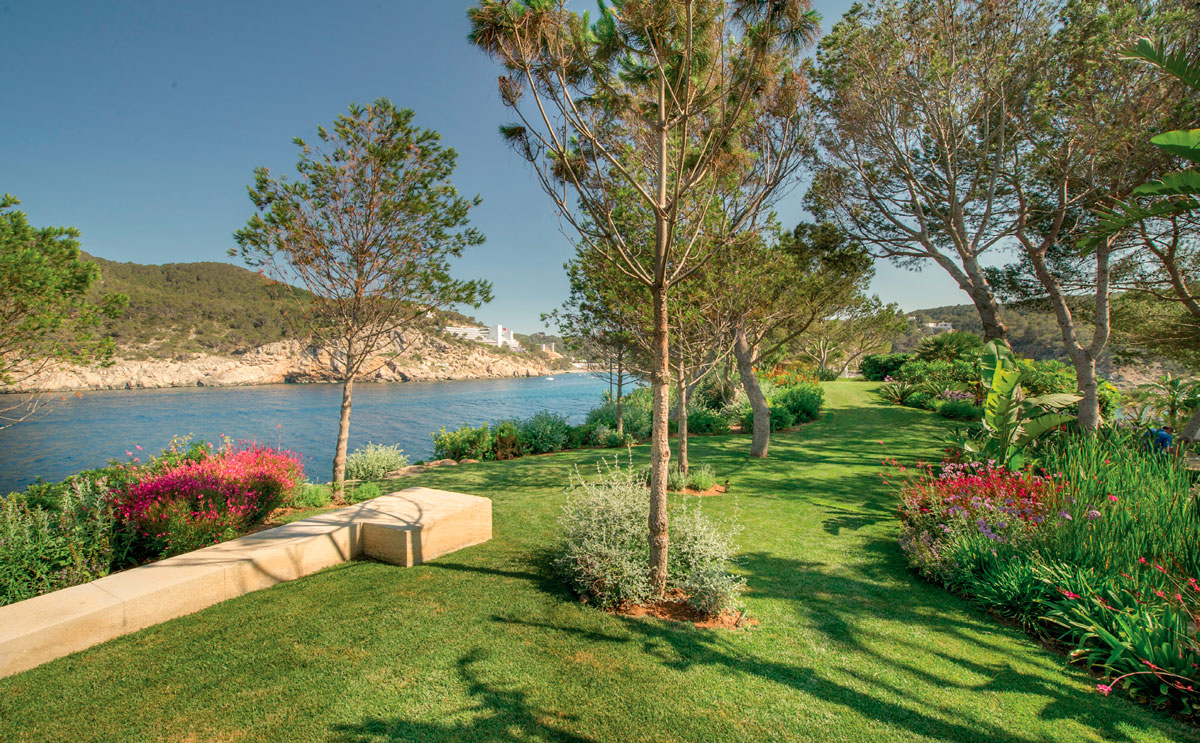 What project would you like to be working on soon?
What project would you like to be working on soon?
I feel like sharing our systematic view of the world, find clients who understand that everything is connected and in harmony, the landscape, the house, the energy, the water, the vegetation, the food and that it is important to close cycles, produce food, cook them and make compost to replenish nutrients from the soil, use the water and return it clean for the irrigation of the fruit trees. I just want to build a house with the soil from the same property in the form of adobe or mud, make lime in the oven of the ranch to turn into the mortar and stucco covering the walls. I just want to build a house connected to the place in which the porch expands the interior spaces and the bathrooms are part of the garden, where the vegetation is involved in the climate of the home and gives us beauty and tasty fruits. Projects that seek the spiritual growth of its inhabitants through beauty, healthy food and deep connection with nature.
